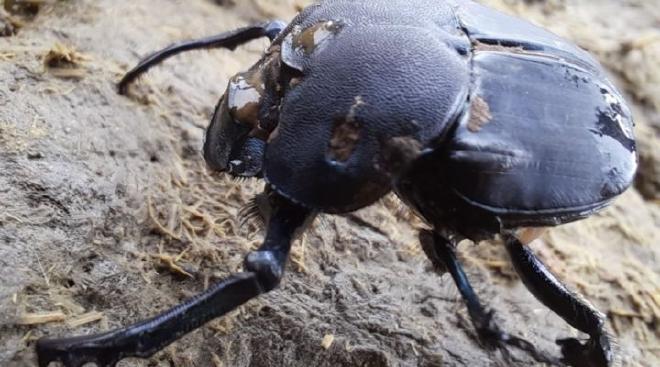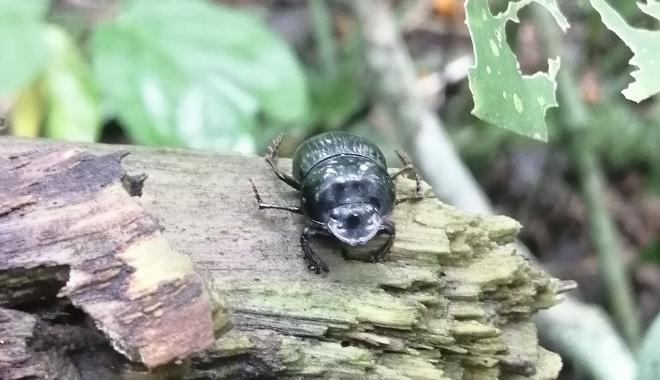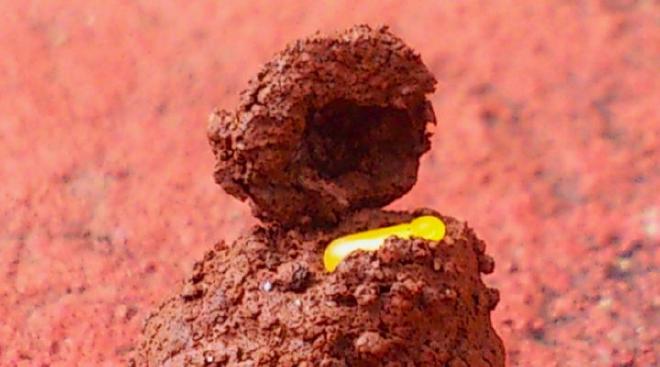

Researchers from CONICET published the first comprehensive review that maps the state of knowledge about dung beetles (Coleoptera: Scarabaeinae) in Argentina, a crucial subfamily that contributes to soil fertility and ecosystem health. The study, conducted by a team from the **Institute of Subtropical Biology** (IBS, CONICET – UNaM), compiled a total of 81 scientific works published since 1944 and determined an exponential growth in research starting from the 2000s, a period that accounts for 78 percent of all studies in the country.
The review, led by CONICET researchers Andrés Gómez-Cifuentes and Gustavo Zurita, examined the temporal and spatial progress of the studies, categorizing the research into seven main areas. The most explored topics in Argentina focus on behavior and evolution, with 28 percent of the studies primarily addressing food relocation strategies and reproductive and mating behavior. Following them are taxonomy, systematics, and phylogeny with 27 percent of the research, focused on the diagnosis, description, and classification of species, while studies on biodiversity and conservation represented 21 percent, primarily focusing on assessing the loss, fragmentation, and replacement of natural environments due to different land uses.
Another weak point is the direct impact of livestock management, which has been the least studied topic to date, with only one study. In this regard, researchers from CONICET emphasize that future management lines must include detailed information about the type of management, the use of antiparasitic drugs, and the characteristics of the pastures to allow for large-scale comparisons.
Beetles in productive systems: the Chaco Seco case #

To demonstrate the relevance of studying ecological functions, the CONICET team cites the previous work of Gómez-Cifuentes, published in 2023, which focused on the ecosystems of the Dry Chaco. This research demonstrated the fundamental role of beetles in the nutrient dynamics of the soil in one of the main livestock regions of the country.

“Our results emphasize the critical role of dung beetles in maintaining soil quality associated with the most widespread livestock management practices in the dry Chaco of Argentina,” explained Gómez-Cifuentes. The researcher emphasizes that this type of study is key to reconciling production with conservation.
Geographical challenges: from the Northwest to Patagonia #
As for the spatial distribution of the studies, the ecoregion that concentrates the largest number of research and species records is the Paranaense Forest, also known as the Atlantic Forest. The Humid and Dry Chaco have also reported a high number of studies and species.
At provincial level, Misiones has the highest number of studies, with 19 publications and a total of 127 species reported in the country. In contrast, it is recommended to intensify research in the provinces of NOA (such as La Rioja, Salta, Catamarca, Tucumán, and Jujuy), the Pampean region (including Buenos Aires, La Pampa, Entre Ríos, and Santa Fe), and Cuyo (San Juan and San Luis), as it is believed that they harbor many more species than those currently recorded.
Citation #
-
The study Past, present and future of dung beetle research in Argentina was published in Revista de la Sociedad Entomológica Argentina, 84 (3): e0311, 2025. https://doi.org/10.25085/rsea.840311. Authors: Gómez-Cifuentes, Andrés & Zurita, Gustavo Andrés
-
The article Amplían estudios sobre una especie de escarabajos clave para la ganadería sustentable, published today on CONICET’s website, was produced by the Área de Comunicación CONICET Nordeste. Many thanks!
Contact [Notaspampeanas](mailto: notaspampeanas@gmail.com)

